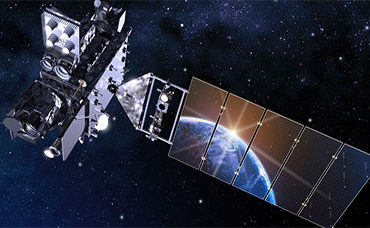Cloud-Based Weather Network Launched

(Source: NOAA)
Access to huge volumes of weather data—volumes that will likely soar after the November launch of the U.S. GOES-R weather satellite—has been limited to a few users at great expense. Now a university-private sector networking effort will attempt to broaden access to atmospheric and weather data.
George Mason University, Fairfax, Va., and Ligado Networks, a satellite and terrestrial network specialist based on Reston, Va., said this week they would demonstrate the feasibility of delivering real-time weather data at lower cost over a cloud-based network.
The data is managed by the U.S. National Oceanic and Atmospheric Administration (NOAA), which also oversees the nation's fleet of weather satellites. The constellation includes the next generation GOES-R, which stands for Geostationary Operational Environmental Satellite-R Series.
The partners said they would initially compare the delivery of data from current weather satellites with the new cloud-based weather data network. One goal is measuring the access speed and reliability of data delivery to meteorologists and other users across the U.S. The networking initiative also is intended to improve the accuracy of weather forecasting models as well as earlier detection of extreme weather such as tornadoes and dense ground fog.
Along with the cloud network, the partners said they also would provide free information extraction tools.
With the increase in extreme weather events, climate researchers at George Mason University and elsewhere have been studying how changes in the oceans and atmosphere affect weather patterns. The networking collaboration with Ligado is part of a push to train the next generation of climate researchers, including the university's new bachelor's program in atmospheric sciences.
"Faster and more accurate climate modeling and weather prediction will help people and organizations—including emergency responders—better prepare for and respond more quickly to weather-related events such as tornadoes, floods and wildfires, saving lives and livelihoods," Deborah Crawford, the university's vice president for research, noted in a statement Thursday (Dec. 15) announcing the weather network partnership.
Ligado also partners with other service providers to deliver secure communications to customers in North America. It is currently preparing to deploy a satellite and ground-based network infrastructure targeting Internet of Things and 5G wireless network markets.
Ligado CEO Doug Smith said the new network could be expanded to provide others schools, libraries and the public with improved access to NOAA weather data.
With the Nov. 19 launch of NOAA's GOES-R satellite, there will plenty of new weather data to sift through. The next-generation geostationary weather satellite will provide continuous imagery and atmospheric measurements of the earth's Western Hemisphere, significantly boosting satellite coverage for weather forecasters and climate scientists.
The payload of sensors also includes a lightning mapper along with a visualization tool that traces how lightning propagates through the atmosphere. The satellite reached its permanent station in geosynchronous orbit 22,000 miles away on Nov. 29. After the reaching its orbital slot, NOAA said the designation for GOES-R changed to GOES-16.
Related
George Leopold has written about science and technology for more than 30 years, focusing on electronics and aerospace technology. He previously served as executive editor of Electronic Engineering Times. Leopold is the author of "Calculated Risk: The Supersonic Life and Times of Gus Grissom" (Purdue University Press, 2016).











